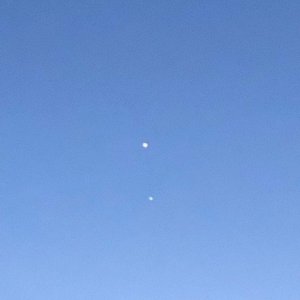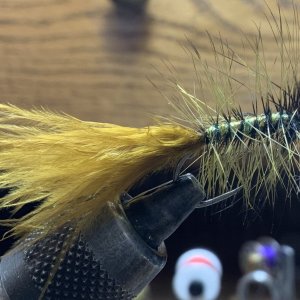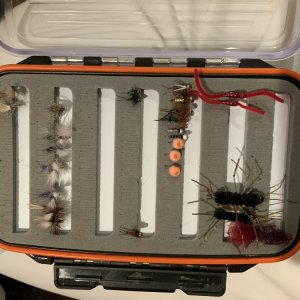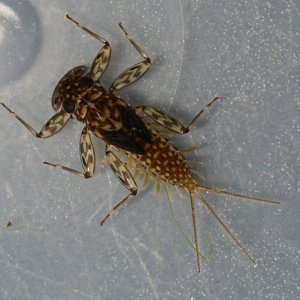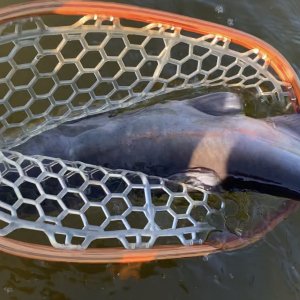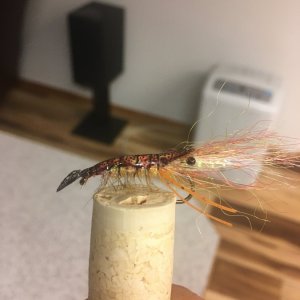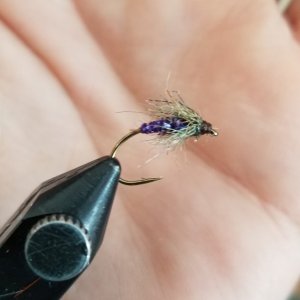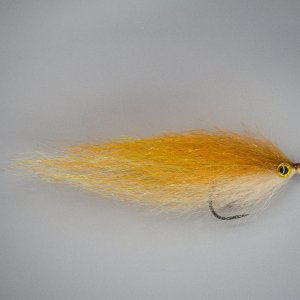Hi friends. I recently purchased a new 5wt fly line, reel, and backing, since my former reel became a victim of vehicle prowl. The fly line I bought has a welded loop on both ends, one to attach to the backing and one to attach to a leader. I have never encountered a welded loop on the back end of my fly line. So my question is this: Should I use an Albright knot, as usual, to attach the line to my backing, or is there an advantage to tying a loop in my backing and attaching the loops? There must be an advantage to the welded loop otherwise why would a manufacturer bother? It seems to me like the welded loop connection might be a little clunky going through the guides, but let me know what you all think. Thanks.
You are using an out of date browser. It may not display this or other websites correctly.
You should upgrade or use an alternative browser.
You should upgrade or use an alternative browser.
Attaching Fly Line to Backing (Welded Loop?)
- Thread starter Egrey14
- Start date
Based on how many times I’ve seen the backing on my 4wts and 6wts (almost never) and the fish one usually catches with 5wt, I’d imagine you could do a simple large no-slip loop knot on your backing and just loop-loop it to your line by passing your reel spool through the backing loop. Things like an Albright, Bimini twist, or splice seem like overkill to me in that situation, but do what you're confident in.
As for why it's there, the loop makes swapping lines easier, in my experience, without burning an inch of line and backing each time.
Sorry about the car prowl, that sucks.
As for why it's there, the loop makes swapping lines easier, in my experience, without burning an inch of line and backing each time.
Sorry about the car prowl, that sucks.
Last edited:
In that scenario, I just tie a triple surgeons knot in the backing and use a loop-to-loop connection. I make the backing loop knot large enough to fit over the entire fly line spool.
I'll second this. I actually saw the knot go out the rod on Fridays big fish, and it came back in with no hiccups. Mine are just large double surgeons loops.Based on how many times I’ve seen the backing on my 4wts and 6wts (almost never) and the fish one usually catches with 5wt, I’d imagine you could do a simple large no-slip loop knot on your backing and just loop-loop it to your line by passing your reel spool through the backing loop. Things like an Albright, Bimini twist, or splice seem like overkill to me in that situation, but do what you're confident in.
As for why it's there, the loop makes swapping lines easier, in my experience, without burning an inch of line and backing each time.
Sorry about the car prowl, that sucks.
You'll have much more trouble with the loop to loop leader to fly line connection hanging up in the rod tip when your rod is bent with a fish on. The guys above are spot on with their recommendations of a big loop knot made in backing.
No advantage, but welded loops are popular among people who don't know or want to bother to learn how to deal with their fishing gear, so the manufacturers give us welded loops. Not surprisingly, we got along quite well for decades without welded loops. Truth be told, rather than an Albright knot, I usually stripped the finish off a few inches of the back end of my fly lines and served and whip finished a loop of the fly line's core. Then I attached the backing to that loop with an improved clinch knot. That made the infrequent change outs easy enough.There must be an advantage to the welded loop otherwise why would a manufacturer bother? It seems to me like the welded loop connection might be a little clunky going through the guides,
The big disadvantage with welded loops is the one on the forward end of the line, as Buzzy mentions. I have not yet figured out a way to rig them so that they pass freely and easily through the rod tip top. So sometimes I cut them off and use a traditional nail knot to attach the leader butt section to the line. I also leave some of them on, thinking that I'll yet one day figure out a way to make them pass through rod guides better. I do like the ease of leader change out, but I'm not sold that welded loops on the front of fly lines is any kind of line improvement.
One big advantage at least in my opinion of the backing loop system is it makes it super simple to change lines. Just make sure the backing loop is big enough to pass the line spool through it.
SF
SF
I do the same as many here have mentioned, form a BIG loop in the backing for easy line change outs. The big loop can pass easily over a spool of line or a reel. For 30# backing, which I have on a few bigger reels, I like to do the blind spliced loop since it's so clean with no knot. But for 20# Dacron I'm not able to thread the Dacron back thru itself so I also do a form of surgeon loop. This seems like a good time to revisit the "how many times thru for the various surgeon knots" discussion.
E.g. I've heard that a surgeons loop is tied by passing the doubled over line TWICE thru the loop, so therefore a Double Surgeons would thus be 4 times thru. But I think a lot of folks use the term double surgeon to reflect just the twice thru method. And a triple surgeon being 3 times thru.
For me, for my backing loops I like to pass the doubled over Dacron a whopping 6 times thru, and while this does cause a few failures and re-ties when it doesn't snug up nicely, when it does seat with no loose loops it is a thing of beauty. I then do two overhands with the tag to form a square knot (that gets the tag sticking out 90 degrees to the line), and coat the whole thing with flexible Solar-EZ. The last step is to use nippers to cut the tag end flush to the knot.
I'm curious how everyone else ties their surgeon loops (both in backing and in mono).
andy
E.g. I've heard that a surgeons loop is tied by passing the doubled over line TWICE thru the loop, so therefore a Double Surgeons would thus be 4 times thru. But I think a lot of folks use the term double surgeon to reflect just the twice thru method. And a triple surgeon being 3 times thru.
For me, for my backing loops I like to pass the doubled over Dacron a whopping 6 times thru, and while this does cause a few failures and re-ties when it doesn't snug up nicely, when it does seat with no loose loops it is a thing of beauty. I then do two overhands with the tag to form a square knot (that gets the tag sticking out 90 degrees to the line), and coat the whole thing with flexible Solar-EZ. The last step is to use nippers to cut the tag end flush to the knot.
I'm curious how everyone else ties their surgeon loops (both in backing and in mono).
andy
Bambooflyguy
Life of the Party
I‘m old and old school....I cut the loops off, speed nail knot to the backing and needle/super glue to the leader to fly line. Easy way to break a bamboo tip is with that loop connection.
Pescaphile
Steelhead
I'd snip it off and tie an albright knot to connect the backing to the fly line.
I get that some people hate loops, and never want to use them. But they are convenient, and I think are fine on a 5wt. I like to make a big loop in the backing (like others have stated), and then tie two triple surgeons knots, spaced a about two inches apart. I haven't had any issue with this method, and it certainly makes changing out lines much easier. But, to each their own. If cutting the loop and tying an Albright is what you're comfortable with, then do that. I'm not gonna tell you how to live your life.
On setups for trout-sized fish, a clinch knot straight onto that welded loop is the easiest and most low-profile connection I’ve found for leader-line. Yeah, it cuts into the coating, but that’s kindof what I’m going for. Eventually, when it croaks, I nail knot a section of similarly flexible mono and tie a loop on that…then tie a clinch onto that.The big disadvantage with welded loops is the one on the forward end of the line, as Buzzy mentions. I have not yet figured out a way to rig them so that they pass freely and easily through the rod tip top. So sometimes I cut them off and use a traditional nail knot to attach the leader butt section to the line. I also leave some of them on, thinking that I'll yet one day figure out a way to make them pass through rod guides better. I do like the ease of leader change out, but I'm not sold that welded loops on the front of fly lines is any kind of line improvement.
On my salt setups, I just go small loop-loop because the fish I’m chasing don’t require long leaders and the loops don’t end up in the top.
All my Dacron backing connections get a reverse blind splice. Stronger than the backing rating, knotless and thin.
It takes a little bit of patience at first but HIGHLY recommended. Use brassie or small wire instead of piano wire
Are you able to do this method with 20# Micronite Dacron as well? I have tried but could never thread the smaller diameter backing. I got pretty good with the 30# stuff.
Divad
Whitefish
I have a spool of SA 20 and 30lb Dacron backing, both work for the splice. The 20lb is harder yet still doable and doesn’t need to be threaded as far to create the “bite”.Are you able to do this method with 20# Micronite Dacron as well? I have tried but could never thread the smaller diameter backing. I got pretty good with the 30# stuff.
As for line to backing, I have yet to have a fish take me there, so I'm not concerned. I hope someday to hook one that will. Front end, nail knot of 12# maxima into double (2 wraps thru loop) surgeon. 8# floro loop (surgeon) to tippet ring then final tippet. When I get a snag the final tippet breaks at ring simplifying re-lining..
Grandpa Jim
Steelhead
I use 30 lb. Dacron backing and tie a big loop bowline knot (loop to loop) into the fly line loop. I really cinch the knot down. To change out a fly line I just snip the Dacron backing line at the knot and tie in another bowline knot (loop to loop) into the loop on the back of my new fly line. I've had a number of chum take me into my backing with this knotting system and it has held up. That knot seems to go through the guides OK. The loop to loop from leader to fly line head is more of a bump going through the guides than the backing loop knot.
Must be the old boy scout in me to use a bowline knot.
Must be the old boy scout in me to use a bowline knot.



